Articles on canadian tokens and medals
This section lists several articles on tokens and medals. You can submit your own articles by contacting us.

List of Numismatic Medals from the Atlantic Provinces Numismatic Associations (1961-2005)
Here's a list of numismatic medals issued from the atlantic provinces numismatic associations between 1961 and 2005.
By CAC | Tuesday, June 18, 2024

Halifax Coin Club First Medal
A small group of coin collectors met in the Fellowship Room of the Y.M.C.A. in Halifax, Nova Scotia, Canada. A period of discussion ensued and it was agreed that a formal club should be organized with the purpose of the club being to promote and encourage the collection and study of coins, medals, tokens and paper money, and to cultivate fraternal relations among collectors.
By thecanadiannumismatist | Monday, April 29, 2024
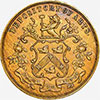
Top 10 most valuable Canadian tokens sold at auction in 2023
Here's the Top 10 most valuable Canadian tokens sold at auction in 2023. Most of these come from either Doug Robins or Donald G. Partrick collections. Prices are in Canadian currency.
By thecanadiannumismatist | Sunday, December 17, 2023
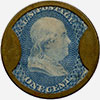
Top 10 most valuable Canadian tokens sold at auction in 2022
Here's the Top 10 most valuable Canadian tokens sold at auction in 2022. Prices are in Canadian currency.
By thecanadiannumismatist | Sunday, December 18, 2022
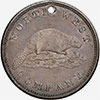
Top 10 most valuable Canadian tokens sold at auction in 2021
The sale of collection of Canadian tokens from The Partrick Canadian Tokens Collection marked the year 2021 for Canadian tokens. Possibly the finest collection of Colonial and Early American coins, tokens and medals ever assembled, the incredible Donald G. Partrick Collection also featured great Canadian items. Here's the Top 10 most valuable Canadian tokens sold at auction in 2021.
By thecanadiannumismatist | Monday, January 3, 2022
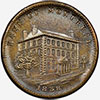
Top 10 most valuable Canadian tokens sold at auction in 2020
The sale of the most impressive collection of Canadian tokens from Doug Robins marked 2018, 2019 and 2020. Doug Robins' wife contacted Heritage after the dead of his life partner to sell these tokens collected mostly in the between 1970 and 2000. Some of the rarest pieces known were sold by Heritage Auction this year. Here's the Top 10 most valuable Canadian tokens sold at auction in 2020.
By Lightw4re | Thursday, November 12, 2020
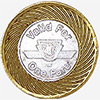
Toronto Transit Commission tokens
Public transportation in Toronto began in 1849 and was operated by a private company. It was not until 1921, with a population of 521,893, that the Toronto Transportation Commission took control of all public transportation in the city.
By Lightw4re | Monday, May 4, 2020

Miramichi Coin Club Medals
The 1970 Miramichi Coin Cub Shipbuilding Medal was struck to commemorate the era of wooden shipbuilding on the Miramichi River. In 1977, another medal was issued to commemmorate the 10th anniversary of the Miramichi Coin Club.
By Randy Larsen | Sunday, October 22, 2006

North West Company: Brass Token, 1820
The North West Company was one of the most important companies engaged in the fur trade during the late 18th and early 19th centuries. The company began about 1775 as a loose partnership of men from Scottish, French-Canadian and U.S. backgrounds. By 1804 it was a well-organized business offering strong competition to the Hudson's Bay Company.
By Library and Archives Canada | Monday, March 29, 2004
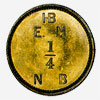
Hudson's Bay Company: One-quarter Made Beaver Token
In 1670 Charles II of Britain granted a charter to the "Governor and Company of Adventurers of England Tradeing [sic] into Hudson's Bay" giving the company absolute control over the territory drained by the rivers flowing into Hudson Bay.
By Library and Archives Canada | Monday, March 29, 2004
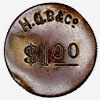
Hudson's Bay Company: One-Dollar Counterstamped Trade Token
When the Hudson's Bay Company began trade with the First Nations, goods were bartered directly. Gradually, however, counters such as ivory discs, small wooden sticks and other objects were introduced to facilitate the transactions. About the middle of the 19th century, tokens with a stamped value replaced these counters.
By Library and Archives Canada | Monday, March 29, 2004
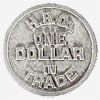
Hudson's Bay Company: One Dollar Trade Token
The Governor and Company of Adventurers of England Trading into Hudson's Bay, better known as the Hudson's Bay Company, was founded in 1670. A little over one hundred and fifty years later, trading posts had been established from Hudson's Bay to the Pacific Ocean, forming the world's first chain of department stores.
By Library and Archives Canada | Monday, March 29, 2004

Beaver Preserve Token
The beaver, or more specifically, the trade in its valuable pelt, played a central role in the early exploration and settlement of Canada. However, the increasing demand for pelts eventually took its toll on beaver populations. The lands around Hudson and James Bays once teemed with beaver, but by 1930 overhunting and disease had reduced the population to near extinction.
By Library and Archives Canada | Monday, March 29, 2004
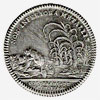
New France, Franco-American Jeton, 1740
In the days before adding machines and other automatic calculators, Europeans used jetons or counters for carrying out simple arithmetical calculations. For example, if livres, sols and deniers were being added in France or pounds, shillings and pence in England, a box with three compartments would be used, one for each denomination.
By Library and Archives Canada | Monday, March 29, 2004
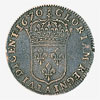
New France, Louis XIV, 15 Sols, 1670
The first coins issued for use in what was later to become Canada were minted over 300 years ago, or nearly 200 years before Confederation. In the early days of New France, the need for a local currency was partially met by the use of ordinary French coins.
By Library and Archives Canada | Monday, March 29, 2004
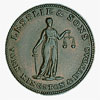
Tokens and Army Bills
It took some time before the public regained its confidence in paper money, as the bad taste left by the notes of the French colonial period lingered. During the War of 1812 between the United States and the colonies of British North America, the Canadian colonial authorities began to issue "army" bills.
By Library and Archives Canada | Monday, March 29, 2004
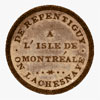
Lower Canada, bridge token, c.1808
In 1808 three bridges were built linking "Bout de l'Ile" or the east end of Montreal Island, with the mainland via Bourdon Island. The Bout de l'lle bridge connected Montreal Island with the smaller Bourdon Island and from there two bridges, the Lachenaie bridge and the Repentigny bridge, were built linking Bourdon Island with the mainland at the confluence of the Assumption and St. Lawrence Rivers.
By Library and Archives Canada | Monday, March 29, 2004
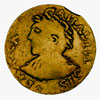
Lower Canada, Vexator Canadiensis, one halfpenny token, 1811
Illustrated is the obverse of one of the most interesting and, at the same time, most puzzling of the various coppers issued privately in Canada in the last century. Called the VEXATOR CANADIENSIS tokens, this group of crudely executed pieces was struck after 1830 bearing the false date 1811. It is now believed that these tokens were intended not only to serve as change but that they also had a satirical purpose.
By Library and Archives Canada | Monday, March 29, 2004
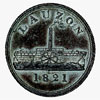
Lower Canada, Lauzon ferry token, 1821
This is one of the earliest Canadian examples of a transportation token. The vessel on the token is the Lauzon, a 310-ton steam-powered side-wheeler. It was built and owned by John Goudie. The first steam-propelled vessel to make regular crossings of the St. Lawrence River between Quebec City and Levis, the Lauzon operated daily from 5 a.m. to 9 p.m. between 1817 and 1828, making as well an occasional trip to Montreal.
By Library and Archives Canada | Monday, March 29, 2004
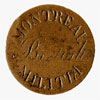
Lower Canada, Montreal British Militia button, one halfpenny token, c. 1830
When faced with shortages of official coinage, Canada's early citizens resorted to a variety of novel substitutes such as playing cards, paper I.O.U.s, and even brass buttons. The illustration features one such button used during the late 18th and early 19th centuries. At that time Canada produced no coinage of its own, so people accepted whatever tokens and foreign coins were available.
By Library and Archives Canada | Monday, March 29, 2004
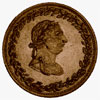
Lower Canada, Tiffen token, one halfpenny, 1812
Nowhere in British North America did the private copper tokens issued by merchants and others have a more fascinating evolutionary history than in Lower Canada - now Quebec. In the 1820s and 1830s, trade in Montreal, the colony's commercial centre, created a strong demand for coinage. As coins were often in short supply, privately produced tokens filled the void.
By Library and Archives Canada | Monday, March 29, 2004
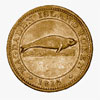
Lower Canada, Magdalen Islands, penny token, 1815
The Magdalen Islands, a group of 16 islands situated in the Gulf of St. Lawrence, were discovered by Jacques Cartier during his voyage to the Gaspe in 1534.
By Library and Archives Canada | Monday, March 29, 2004
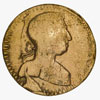
Lower Canada, Blacksmith token, one halfpenny, c. 1830
During the first half of the 19th century, the great variety of coins in common usage in British North America contributed to a very chaotic currency situation that left the system open to many abuses. Nowhere was this more evident than in Lower Canada. To compensate for the shortage of circulating coins, it was the practice for merchants to issue their own copper tokens.
By Library and Archives Canada | Monday, March 29, 2004
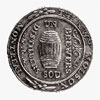
Lower Canada, Molson, one halfpenny token, 1837
In 1763 France and England signed the Treaty of Paris and Canada became a British possession. Sixty years later the mother country had made no effort to provide an official currency for the young colony. By this time several private banks were in operation and they issued paper money which served to facilitate large business transactions.
By Library and Archives Canada | Monday, March 29, 2004
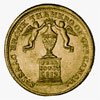
Upper Canada, Sir Isaac Brock, one halfpenny token, 1816
In the opening phases of the War of 1812, Major General Sir Isaac Brock, commander of the British forces in Upper Canada, distinguished himself in his untiring efforts in the province's defence, culminating with a decisive victory over the U.S. forces at Detroit. Brock was killed on 13 October 1812 during an attack by invading U.S. forces at Queenston Heights on the Niagara frontier.
By Library and Archives Canada | Monday, March 29, 2004
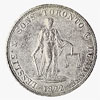
Upper Canada, Lesslie & Sons, two- penny token, 1822
During much of the century preceding Confederation there was a chronic shortage of small change in all the British provinces. No official coins were provided for either Upper or Lower Canada and the foreign coins brought into the country tended to flow out again. The gap was partially filled by enterprising merchants who issued their own tokens as a local coinage.
By Library and Archives Canada | Monday, March 29, 2004
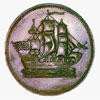
Prince Edward Island, Ships, Colonies & Commerce one halfpenny token, 1830 - 1860
One of the commonest kinds of metallic tokens issued in Canada by merchants and others to alleviate the shortage of coins were the ones bearing a ship on the obverse side and the inscription SHIPS, COLONIES & COMMERCE on the reverse. The inscription refers to the famous statement made by Napoleon in 1811 that ships, colonies and commerce were the three British advantages that would defeat him in the end.
By Library and Archives Canada | Monday, March 29, 2004
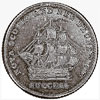
Nova Scotia and New Brunswick, anonymous, one halfpenny token
The copper halfpenny illustrated is perhaps one of the most intriguing Canadian tokens of the early 19th century. Although the piece appears to be of British manufacture, its exact origin remains a mystery. Tokens such as this were usually put into circulation by merchants in order to alleviate chronic shortages of small change.
By Library and Archives Canada | Monday, March 29, 2004
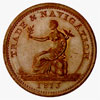
Nova Scotia, anonymous, penny token 1813
During the early part of the nineteenth century, Halifax was a major British military station as well as a trans-shipment point for supplies being sent from the United States to Europe to help the British in their struggle against Napoleon. This increased commercial activity intensified the port's need for small change, a commodity that had always been in short supply.
By Library and Archives Canada | Monday, March 29, 2004
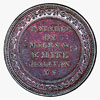
Nova Scotia, Miles W. White, one halfpenny token, 1815
Miles W. White, a native of Shelburne, Nova Scotia, opened a hardware and ironmongery business in Halifax in 1812. His firm was one of several that supplied small copper change to the local inhabitants. These commercial tokens provided the small change necessary to carry on business transactions in a country often beset by shortages of regal coin.
By Library and Archives Canada | Monday, March 29, 2004
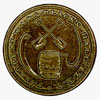
Nova Scotia,W.A. & S Black, one halfpenny token, 1816
In the eighteenth century Nova Scotia received occasional shipments of English pennies and halfpennies. However, after the American Revolution the shipments became fewer, and after 1795 they stopped altogether.
By Library and Archives Canada | Monday, March 29, 2004
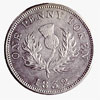
Nova Scotia, Provincial government, penny token, 1832
In the early days there was a perennial shortage of coins in British North America. To meet this problem Nova Scotia was granted authority in 1823 to issue penny and halfpenny tokens. These coins appeared from 1823 to 1856.
By Library and Archives Canada | Monday, March 29, 2004
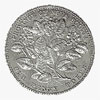
Nova Scotia, Provincial government, penny token, 1856
As early as 1823 Nova Scotia had a minor coinage of its own, consisting of penny and halfpenny tokens. At first they bore the bust of George IV on the obverse and a Scottish thistle on the reverse. In 1840 a rather unflattering likeness of Queen Victoria appeared on the obverse, but the thistle remained.
By Library and Archives Canada | Monday, March 29, 2004
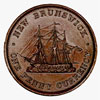
New Brunswick, Provincial government, penny token, 1854
New Brunswick, which was originally part of Nova Scotia, was established as a separate colony in 1784. For several decades thereafter, a mixture of foreign coins obtained in trade provided an adequate circulating currency for the new colony.
By Library and Archives Canada | Monday, March 29, 2004

Newfoundland, Rutherford Brothers, one halfpenny token, 1846
Newfoundland, like other parts of British North America, suffered from a chronic shortage of small denomination coins during much of its early history. The British government made no effort to provide a local currency and the islanders had to make do with an insufficient supply of badly worn foreign coins.
By Library and Archives Canada | Monday, March 29, 2004
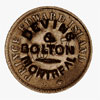
Devins & Bolton, Montreal, Quebec, advertising token, 1863 - 1880
Counterstamps have long been used on coins and tokens to indicate a change in issuing authority or in value, to convey political statements or simply to advertise a business or its products. The most prolific issuer of counterstamped pieces in 19th century Canada was Devins and Bolton, a firm of chemists and druggists in Montreal.
By Library and Archives Canada | Monday, March 29, 2004

Samuel Anckorn, Owen Sound, Ontario, one- shave token 1892
The severe shortage of small change that plagued Canada during the 19th century prompted many merchants to issue private tokens. Designed for strictly local use, these tokens passed from hand to hand until redeemed by the issuer for some specific service or commodity or for a discount on a purchase.
By Library and Archives Canada | Monday, March 29, 2004
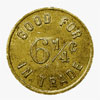
Rossland Billiard and Bowling Hall, Rossland, British Columbia, 6 and one-quarter cents, c.1880
From the 1880s until the beginning of the First World War, the merchant's token enjoyed a heyday in Canada, alleviating a general shortage of small change while offering direct advantages to business. Inexpensive to produce, the tokens served as advertising and, in theory at least, were redeemable only in the establishment that issued them.
By Library and Archives Canada | Monday, March 29, 2004
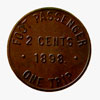
Red River and Assiniboine Bridge Co., Winnipeg, Manitoba, two cents, 1898
Many early Canadian companies and concerns have long since disappeared, leaving behind only the smallest physical indication of their existence or of the nature of their business. The Red River and Assiniboine Bridge Company of Winnipeg is an excellent case in point.
By Library and Archives Canada | Monday, March 29, 2004
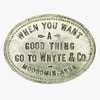
Moosomin, Assa., Whyte & Co., 50 cents, 1893
The District of Assiniboia was created in the North-West Territories in 1882 and comprised the southern portion of present-day Saskatchewan. The district name was derived from that of the Assiniboin Indians who once inhabited the region.
By Library and Archives Canada | Monday, March 29, 2004
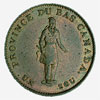
Bank Tokens
Banks did more than simply issue paper money. In the 1830s, they began to import large numbers of tokens from England. The Bank of Montreal, for instance, imported both anonymous tokens and tokens stamped with its name. The Banque du Peuple also issued a 1-sou token in Montreal.
By Library and Archives Canada | Monday, March 29, 2004
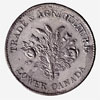
Banque du Peuple, rebellion sou, 1837 (obverse)
The chronic shortage of small coins during the first half of the 19th century gave rise to a series of attractive copper tokens known as "bouquet sous." In 1835 the Governor of Lower Canada granted the Bank of Montreal the authority to issue copper tokens of good weight to meet the need for small change.
By Library and Archives Canada | Monday, March 29, 2004
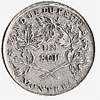
Banque du Peuple, rebellion sou, 1837 (reverse)
In an effort to alleviate the chronic shortage of small change in Lower Canada in the 1830s, several of the chartered banks were authorized to issue copper sous showing a bouquet of roses, thistles, shamrocks, wheat and maple leaves. The piece illustrated was issued by La Banque du Peuple.
By Library and Archives Canada | Monday, March 29, 2004
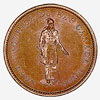
Bank of Montreal, two sous (habitant penny), 1837
During the first half of the 19th century there was a chronic shortage of small coins in Lower Canada. In 1835, following a government decision to remove all the lightweight pieces from circulation, the shortage became acute.
By Library and Archives Canada | Monday, March 29, 2004
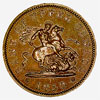
Bank of Upper Canada, penny token, 1850
The Bank of Upper Canada was established in 1821 in York (Toronto, Ontario) under a charter granted by the Province of Upper Canada in 1819. When Upper and Lower Canada were united in 1841 to form the Province of Canada, it was decided that only the bank that held the government accounts should have the right to issue copper tokens.
By Library and Archives Canada | Monday, March 29, 2004

Devins & Bolton, Victoria, advertising token, 1867
The token illustrated is an advertising piece issued by Devins & Bolton, a firm of Montreal druggists. Richard John Devins was born in Montreal in 1837. Although he studied medicine at McGill University, he did not enter practice but rather devoted himself to the study of chemistry and medicine.
By Library and Archives Canada | Monday, March 29, 2004

Trade and Other Tokens of the Gatineau Region
Various tokens circulated in the Gatineau region from the 1830s up until the 1970s. The following pages describe the variety of tokens that circulated in this area, their producers and their issuers, and some of the reasons for their introduction and discontinuance. Many of these tokens are on display in the Currency Museum at the Bank of Canada.
By P.S. Berry (Bank of Canada) | Sunday, February 3, 2002

Ewen McLeod and his Wheatley River Token
As well as being a country merchant, Ewen McLeod was a numismatist. It is not known when he began collecting, but he joined the American Numismatic Association in 1899. According to Fred Bowman's records in the Bank of Canada National Currency Collection library, McLeod was member number 129, quite an early number for an international organization such as this.
By Ralph Dickieson | Wednesday, November 28, 2001
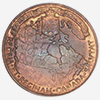
The fun of medal collecting
There are many different kinds of medals, but perhaps the most common types are commemorative medals (those that record some historical events such as the coronation of a king or queen). Other medals are awarded as agricultural and horticulture prizes, school pricez, sporting and athletic prizes, and exhibition prizes.
By George Manz | Tuesday, January 9, 2001
More articles
You can submit your own articles by contacting us.



